新概念英语第四册课件教学内容
- 格式:pptx
- 大小:366.81 KB
- 文档页数:17


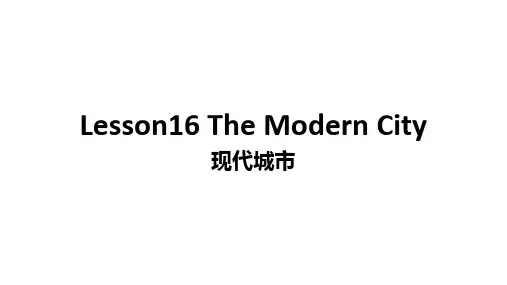
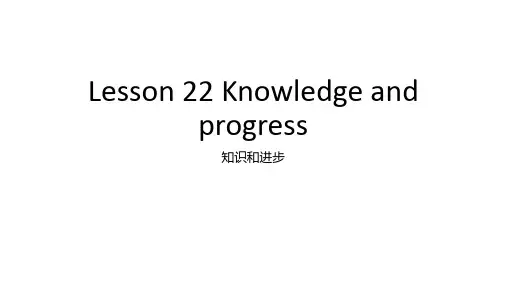

Lesson 43Are there strangers in space?宇宙中有外星人吗?What does the 'uniquely rational way' for us to communicate with other intelligent beings in space depend on?We must conclude from the work of those who have studied the origin of life, that given a planet only approximately like our own, life is almost certain to start. Of all the planets in our solar system, we ware1 now pretty certain the Earth is the only one on which life can survive. Mars is too dry and poor in oxygen, Venus far too hot, and so is Mercury, and the outer planets have temperatures near absolute zero and hydrogen-dominated atmospheres. But other suns, start as the astronomers3 call them, are bound to have planets like our own, and as is the number of stars in the universe is so vast, this possibility becomes virtual certainty. There are one hundred thousand million starts in our own Milky4 Way alone, and then there are exist is now estimated at about 300 million million. Although perhaps only 1 per cent of the life that has started somewhere will develop into highly complex and intelligent patterns, so vast is the number of planets, that intelligent life is bound to be a natural part of the universe.If then we are so certain that other intelligent life exists in the universe, why have we had no visitors from outer space yet? First of all, they may have come to this planet of ours thousands or millions of years ago, and found our then prevailing5 primitive6 state completely uninteresting to their own advanced knowledge. Professor Ronald Bracewell, a leading American radio astronomer2, argued in Nature that such a superior civilization, on a visit to our own solar system, may have left an automatic messenger behind to await the possible awakening7 of an advanced civilization. Such a messenger, receiving our radio and televisionsignals, might well re-transmit them back to its home-planet, although what impression any other civilization would thus get from us is best left unsaid.But here we come up against the most difficult of all obstacles to contact with people on other planets --the astronomical8 distances which separate us. As a reasonable guess, they might, on an average, be 100 light years away. (A light year is the distance which light travels at 186,000 miles per second in one year, namely 6 million million miles.) Radio waves also travel at the speed of light, and assuming such an automatic messenger picked up our first broadcasts of the 1920's, the message to its home planet is barely halfway9 there. Similarly, our own present primitive chemical rockets, though good enough to orbit men, have no chance of transporting us to the nearest other star, four light years away, let alone distances of tens or hundreds of light years.Fortunately, there is a 'uniquely rational way' for us to communicate with other intelligent beings, as Walter Sullivan has put it in his excellent book, We Are not Alone. This depends on the precise radio frequency of the 21-cm wavelength10, or 1420 megacycles per second. It is the natural frequency of emission11 of the hydrogen atoms in space and was discovered by us in 1951; it must be known to any kind of radio astronomer in the universe.Once the existence of this wave-length had been discovered, it was not long before its use as the uniquely recognizable broadcasting frequency for interstellar communication was suggested. Without something of this kind, searching for intelligences on other planets would be like trying to meet a friend in London without a pre-arranged rendezvous12 and absurdly wandering the streets in the hope of a chance encounter.ANTHONY MICHAELIS Are There Strangers in Space? from The Weekend TelegraphNew words and expressions 生词和短语Mercuryn. 水星hydrogenn. 氢气prevailingadj. 普遍的radio astronomer射电天方学家uniquelyadv. 唯一地rationaladj. 合理的radio frequency无线电频率cmn. 厘米megacyclen. 兆周emissionn. 散发interstelleradj.星际的rendezvousn. 约会地点参考译文根据研究生命起源的人们所作的工作,我们必然会得出这样的结论:如果设想有一颗行星和我们地球的情况基本相似,那几乎肯定会产生生命。
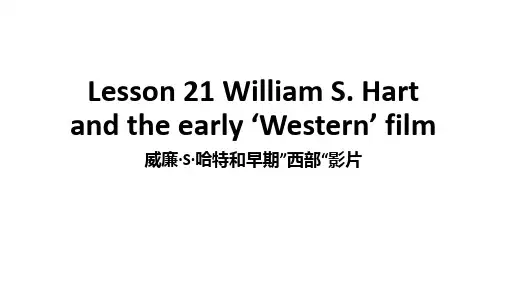
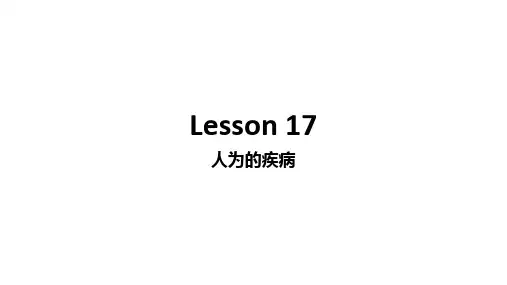
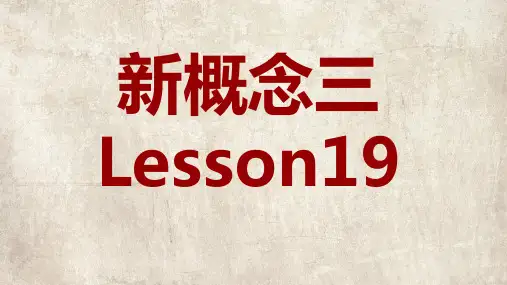

Lesson 41Training elephants训练大象At what point does the training of a captive wild elephant begin?Two main techniques have been used for training elephants, which we may respectively the tough and the gentle. The former method simply consists of setting an elephant to work and beating him until he does what is expected of him. Apart from moral considerations this is a stupid method of training, for it produces a resentful animal who at a later stage may well turn man-killer. The gentle method requires more patience in the early stages, but produces a cheerful, good-tempered elephant who will give many years of loyal service.The first essential in elephant training is to assign to the animal a single mahout who will be entirely1 responsible for the job. Elephants like to have one master just as dogs do, and are capable of a considerable degree of personal affection. There are even stories of half-trained elephant calves2 who have refused to feed and pined to death when by some unavoidable circumstance they have been deprived of their own trainer. Such extreme cases must probably be taken with a grain of salt, but they do underline the general principle that the relationship between elephant and mahout is the key to successful training.The most economical age to capture an elephant for training is between fifteen and twenty years, for it is then almost ready to undertake heavy work and can begin to earn its keep straight away. But animals of this age do not easily become subservient3 to man, and a very time man, and a very firm hand must be employed in the early stages. The captive elephant, still roped to a tree, plunges5 and screams every time a man approaches, and for several days will probably refuse all food through anger and fear. Sometimes a tame elephant is tethered nearby to give the wild one confidence, and in most cases the captive graduallyquietens down and begins to accept its food. The next stage is to get the elephant to the training establishment, a ticklish6 business which is achieved with the aid of two tame elephants roped to the captive on either side.When several elephants are being trained at one time, it is customary for the new arrival to be placed between the stalls of two captives whose training is already well advanced. It is then left completely undisturbed with plenty of food and water so that it can absorb the atmosphere of its new home and see that nothing particularly alarming is happening to its companions. When it is eating normally, its own training begins. The trainer stands in front of the elephant holding a long stick with a sharp metal point. Two assistants, mounted on tame elephants, control the captive from either side, while others rub their hands over his skin to the accompaniment of a monotonous7 and soothing8 chant. This is supposed to induce pleasurable sensations in the elephant, and its effects are reinforced by the use of endearing epithets10. The elephant is not son', or 'ho! my father', or 'my mother', according to the age and sex of the captive. The elephant is not immediately susceptible11 to such blandishments, however, and usually lashes13 fiercely with its trunk in all directions. These movements are controlled by the trainer with the metal-pointed stick, and the trunk eventually becomes so sore that the elephant curls it up and seldom afterwards uses it for offensive purposes. RICHARD CARRINGTON ElephantsNew words and expressions 生词和短语techniquen. 技术toughadj. 强硬的resentfuladj. 忿恨不满的assignv. 分配,指派mahoutn. 驯象人calf14n. 幼仔pinev. 消瘦underlinev. 着重说明,强调keepn. 生计subservientadj. 屈从的plunge4v. 向前冲tameadj. 养驯服了的tetherv. (用绳)拴ticklishadj. 难对付的,棘手的alarmingadj. 引起惊恐的accompanimentn. 伴奏soothe15v. 镇定chantn. 单调的歌reinforcev. 加强endearingadj.惹人喜爱的epithet9n. 称呼susceptibleadj. 易受感动的blandishmentn. 奉承lash12v. 猛烈地甩curlv. 使卷曲参考译文驯象有两种主要的方法,我们分别称之为强硬法和温柔法。
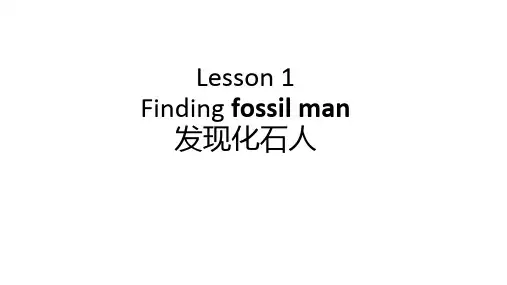
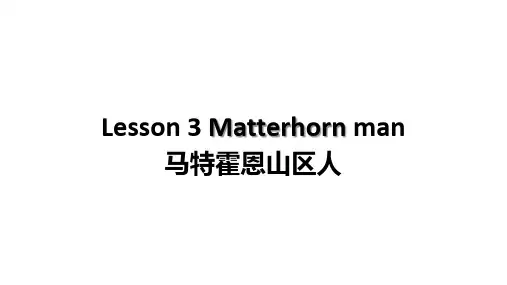
Lesson 42Recording1 an earthquake记录地震What does a pen have to do to record on paper the vibrations2 generated by an earthquake?An earthquake comes like a thief in the night, without warning. It was necessary, therefore, to invent instruments that neither slumbered4 nor slept. Some devices were quite simple. One, for instance, consisted of rods of various lengths and thicknesses with would stand up end like ninepins. When a shock came, it shook the rigid5 table upon which these stood. If it were gentle, only the more unstable6 rods fell. If it were severe, they all fell. Thus the rods, by falling, and by the direction in which they fell, recorded for the severe, they all fell. Thus the rods, by falling, and by the direction in which they fell, recorded for the slumbering7 scientist the strength of a shock that was too weak to waken him, and the direction from which it came.But instruments far more delicate than that were needed if any really serious advance was to be made. The ideal to be aimed at was to devise an instrument that could record with a pen on paper, the movements of the ground or of the table as the quake passed by. While I write my pen moves, but the paper keeps still. With practice, no doubt, I could in time learn to write by holding the pen still while the paper moved. That sounds a silly suggestion, but that was precisely8 the idea adopted in some of the early instruments (seismometers) for recording earthquake waves. But when table, penholder and paper are all moving, how is it possible to write legibly? The key to a solution of that problem lay in an everyday observation. Why does a person standing9 in a bus or train tend to fall when a sudden start is made? It is because his feet move on , but his head stays still. A simple experiment will help us a little further. Tie a heavy weight at the end of a long piece of string. With the hand to and fro and around but not up and string so that the weight nearly touches the ground. Now movethe hand to and fro and around but not up and down. It will be found that the weight a piece of string. With the hand held high in the air, hold the string so that the weight nearly touches the ground. Now move the hand to and fro and around but not up and down. It will be found that ten weight moves but slightly or not at all. Imagine an earthquake shock shaking the floor, the paper, you and your hand. In the midst of all this movement, the weight and the pen would be still. But as the paper moved from side to side under the pen point, its movement would be recorded in ink upon its surface. It was upon this principle that the first instruments were made, but while the drum was being shaken, the line that the pen was drawing wriggled11 from side to side. The apparatus12 thus described, however, records only the horizontal component13 of the wave movement, which is, in fact, much more complicated. If we could actually see the path described by a particle, such as a sand grain in the rock, it would be more like that of a bluebottle path described by a particle, such as a sand grain in the rock, it would be more like that of a bluebottle buzzing round the room; it would be up and down, to and fro and from side to side. Instruments have been devised and can be so placed that all three elements can be recorded in different graphs. When the instrument is situated14 at more than 700 miles from the earthquake centre, the graphic15 record shows three waves arriving one after at short intervals16. The first records the arrival of longitudinal vibrations. The second marks the arrival of transverse vibrations which travel more slowly and arrive several minutes after the first. These two have travelled through the earth. It was from the study of these that so much was learnt about the interior of the earth. The third, or main. The third, or main wave, is the slowest and has travelled round the earth through the surface rocks.H.H,SWINNERTON The Earth beneath UsNew words and expressions 生词和短语earthquaken. 地震slumber3v. 睡眠ninepinn. 九柱戏中的木柱rigidadj. 坚硬的delicateadj. 灵感的seismometern. 地震仪penholdern. 笔杆legiblyadv. 字迹清楚地drumn. 鼓状物wriggle10v. 扭动bluebottlen. 绿头苍蝇graphn. 图表graphicadj. 图示的longitudinaladj. 纵向的transverseadj. 横向的参考译文地震就像夜间的小偷,不打招呼就来了。